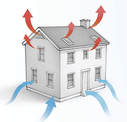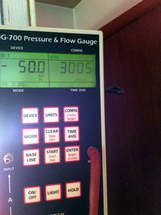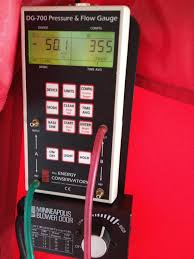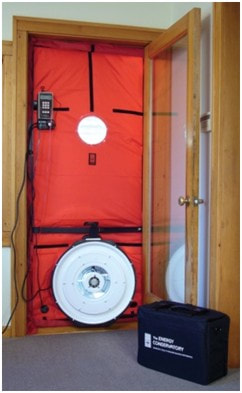
Definition of air sealing: a seal to prevent passage of air or vapor
When we build a house, from start to finish we are trying to escape the elements. The home is basically a box sitting in the outside air. The air pressure outside the box (atmospheric pressure) is usually greater than inside the box so the air is constantly trying to get in. This force is greater at the base of the home and as the air comes in it is forced upward by a phenomenon called the Stack Effect.
The stack effect works in both winter and summer. Cracks and openings throughout the building shell allow the pressure difference between indoor and outdoor spaces to drive air out of the top floor and to suck air in through the first floor. The best way to remedy the stack effect in most houses is by air-sealing the house to minimize gaps between indoor and outdoor spaces.
My task in the Test House is to find the leaks and let the guys who are going to seal them know where they are, how big they are and what materials are needed to fix them and what the cost will be to do this.
Now I'm off to inspect some of the usual places these leaks occur and I'll share that with you in my next post.
The stack effect works in both winter and summer. Cracks and openings throughout the building shell allow the pressure difference between indoor and outdoor spaces to drive air out of the top floor and to suck air in through the first floor. The best way to remedy the stack effect in most houses is by air-sealing the house to minimize gaps between indoor and outdoor spaces.
My task in the Test House is to find the leaks and let the guys who are going to seal them know where they are, how big they are and what materials are needed to fix them and what the cost will be to do this.
Now I'm off to inspect some of the usual places these leaks occur and I'll share that with you in my next post.





 RSS Feed
RSS Feed
